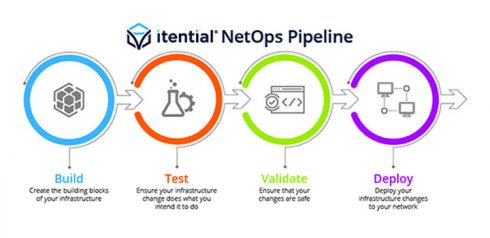
Intelligent automation software provider Itential launched its new API services to further Network Infrastructure as Code and help network engineers adopt CI/CD principles for network automation and programmability.
“By incorporating a Network Infrastructure as Code approach to automation, enterprises can use Itential’s modern agile software development principles to build, test, validate, and deploy network changes and adopt existing investments in the infrastructure as code ecosystem,” said Chris Wade, the CTO of Intential.
The Network as Code (NaC) strategy is part of enterprises’ wider NetDevOps adoption that that applies the concepts of Infrastructure as Code (IaC) to the full network domain, and includes traditional data centers, campus networks, WANs and cloud environments.
The API services enables users to dynamically render configurations from build templates to build the infrastructure, simulate changes before they are made and to compare the simulation outputs to desirable outcomes. It also lets users validate their changes and deploy the infrastructure changes to the network using tools such as Ansible, Terraform, SDN Controllers and Orchestrators.
“Netdevops allows organizations to adopt CI/CD pipelines with the ability to build, test, validate and deploy changes before they are made to the network. These principles greatly improve velocity and quality while catching errors for a continuous improvement methodology,” Itential wrote.
The APIs and services include:
- TemplateIDE: to design and test templates such as Jinja2, TextFSM, and Mustache; as well as leverage a library of existing templates to execute through flexible REST interface.
- JSONtoSchema: an Intelligent inference engine which generates JSON Schema leveraging the latest specification based on the JSON objects provided through the tool or API.
- ConfigValidator: allows users to validate their network configurations before they attempt to push them to the network.
- PolicyAnalyzer: assesses policies such ACL and Firewall for correctness, overlap, and performance. Users can valuate MAC, IPv4, IPv6 for validity and calculate CIDR block optimization.








